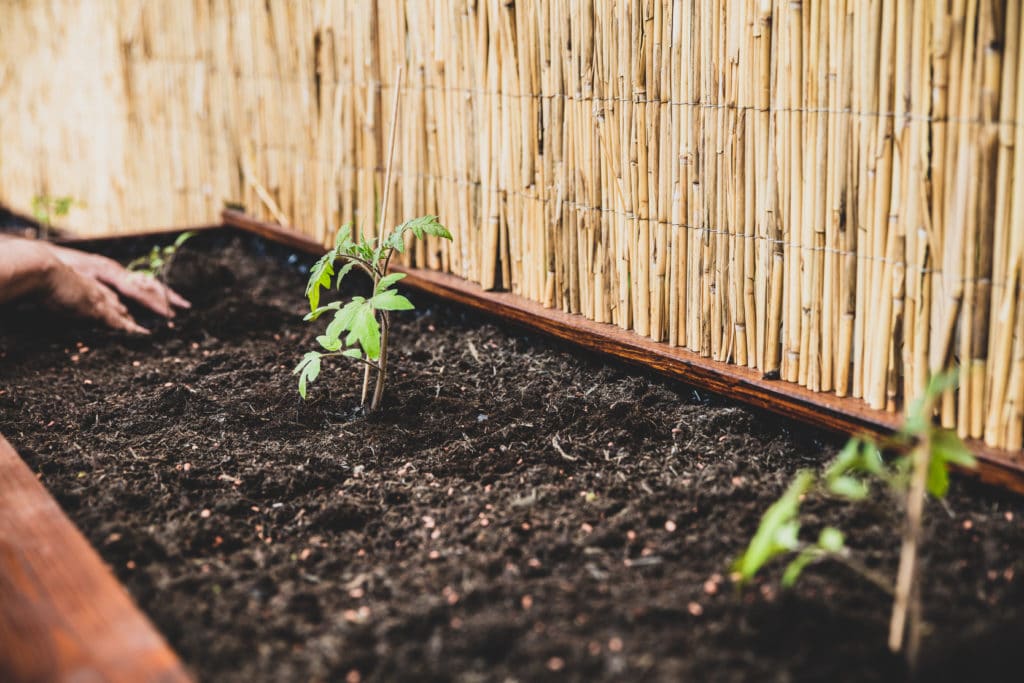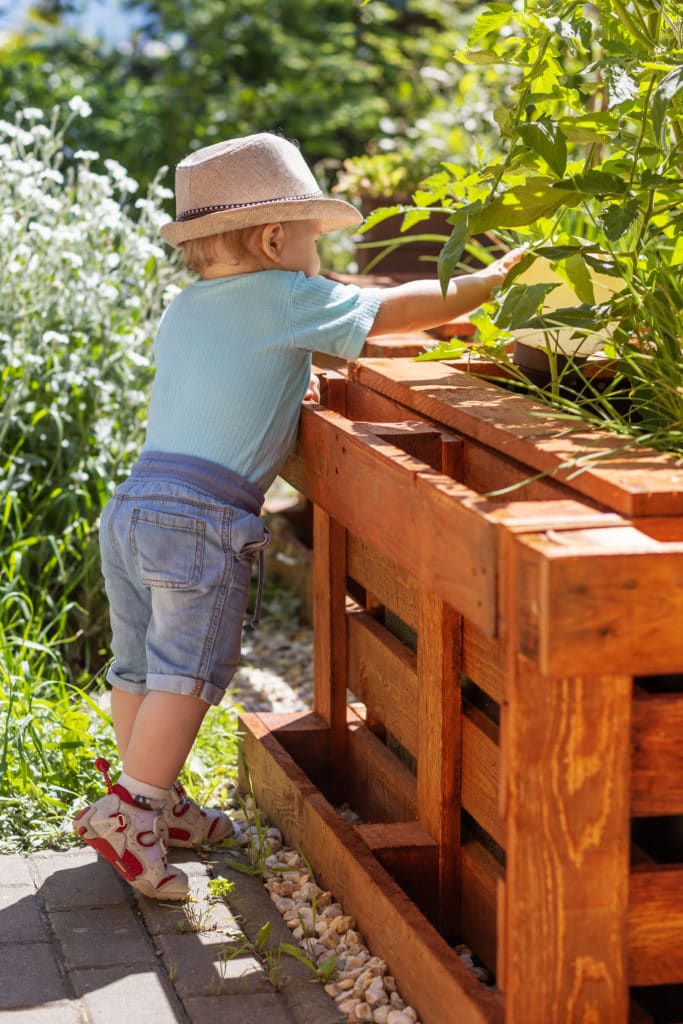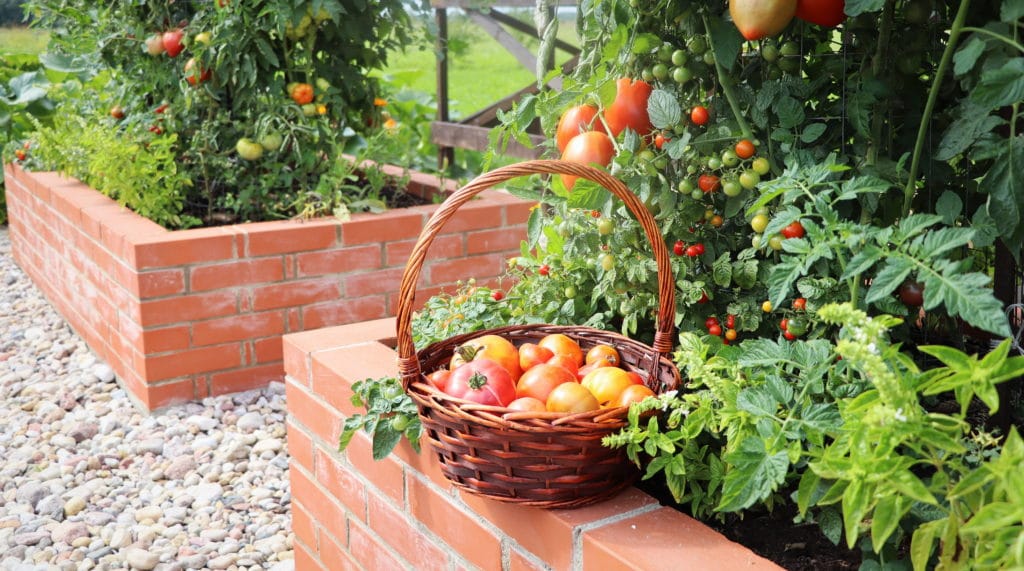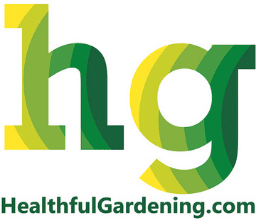
Tomatoes are one of the most popular plants in a backyard garden. They’re popular because they’re easy to maintain, highly productive under the right circumstances, and many types perform well in pots or a raised bed. Growing tomatoes in elevated beds is an excellent technique to produce them in a confined area or on a limited budget!
If you’re looking for a unique way to decorate your yard, try making tomato-themed garden beds. Create a salsa garden or opt to include tomato companion plants, since there are so many various options. Harvesting what you like to eat is one of the pleasures of gardening, so pick a meal and strive to grow all the essential components for it.
Tomatoes can be grown in raised beds in a manner different from that used to grow them on the ground. You’ll have to make some modifications to your gardening practice, as well as ensure that your bed is deep enough. However, growing tomatoes in a raised bed takes very little time.
Suggested Products At Amazon For Growing Tomatoes:
- Neem Bliss 100% Cold Pressed Neem Oil
- Safer Brand Insect Killing Soap
- PyGanic Botanical Insecticide
- Monterey BT Caterpillar Killer
- Harris Diatomaceous Earth, Food Grade
- NaturesGoodGuys Beneficial Nematodes
- Southern Ag Liquid Copper Fungicide
Quick Care Guide
Common Name(s): Tomato, garden tomato
Scientific Name: Solanum lycopersicum
Days to Harvest: 50-100, depending on the variety
Light: Full sun, 8+ hours per day
Water: 1-2″ per week, twice a day in the hottest parts of summer
Soil: Well-draining, loose sandy loam with lots of organic matter, neutral or slightly acidic
Fertilizer: High nitrogen fertilizer when planting; high phosphorous and potassium fertilizer later to promote fruiting
Pests: Aphids, spider mites, whiteflies, tomato hornworms, cutworms, tomato fruitworms, flea beetles, California potato beetles, root-knot nematodes
Diseases: Early blight, late blight, Septoria leaf spot, bacterial spot, multiple viruses

Basics Facts About Tomatoes
The tomato, often known as the “peach of the tropics,” is a fruit with a spherical shape, vivid color, and delicious taste. The tomato (Solanum lycopersicum), which has become one of the most consumed fruits in the world, is eaten fresh, cooked, used in sauces, and canned to store for later. You’ll find tomatoes in popular cuisines all around the world, some of which have been used to create exquisite flavor combinations.
Garden tomatoes come in a wide range of shapes and sizes. The round red tomato is the most well-known form, but they can take on various forms, sizes, and colors. Tomato plants may produce a rainbow of colors by generating fruits that are red, pink, burgundy, orange, yellow, gold, green, purple, blackish blue, or variegated. Tomatoes can be smooth or lumpy; there are numerous varieties to select from!
There are no particular types of tomatoes that are ideal for raised bed growing, although all tomato plants require some special attention in a raised garden environment. Plant determinate tomatoes in raised beds if space is limited; however, even a tiny area may allow an indeterminate variety to reach high into the garden if trellised.
The tomato has been feared since time immemorial because it was thought to be poisonous. This notion isn’t too far-fetched; Solanum lycopersicum, like other nightshade plants, is in the solanaceae family, which includes several harmful plants. Eating excessive amounts of tomato plant leaves might induce stomach and brain problems, so stick to the fruit!
Planting Tomatoes In A Raised Bed
Planting tomatoes in raised beds is somewhat different from planting them in the ground in containers. You may discover that growing tomatoes in raised beds is simpler since they are more accessible, but you’ll need to keep an eye on the moisture in your garden bed. Let’s look at some of the variables that make producing tomato plants in raised beds a little unique.
When to Plant Your Tomatoes
Tomato seed germination may be achieved in a variety of ways. Start seeds indoors a few weeks before your last frost. This gives you plenty of time to care for your seedlings before you put them in the garden.
It’s time to harden your plants off for transplant into the garden when they’ve reached at least 4 inches in height and nighttime temperatures stay above 50 degrees. Because the soil in terraced gardens warms up faster than soil in in-ground gardens, you may have a longer growing season. Young plants that develop inside a cold frame do not get damaged by the elements.
You may also direct seed tomato plants in the garden bed. Tomatoes like warm soil, so wait until all danger of frost has passed and the soil temperature reaches at least 60 degrees Fahrenheit.
When you plant tomatoes in a raised garden bed, there are a few things to keep in mind. The most important factor is that the soil in a raised bed warms up faster than in-ground soil, so you can start planting earlier. You can also transplant tomato plants into a raised bed later in the season when the soil is still warm.
Another thing to consider is that the soil in a raised bed dries out faster than in-ground soil. This may require you to water your tomato plants more frequently. Mulching the bed will help to retain moisture in the soil.
Site Preparation
Your raised bed tomato garden should be about 3 feet wide and any length you choose. You won’t need to prepare the soil as you would for an in-ground garden, but it is a good idea to add some organic matter to the soil before planting. Compost is perfect for this; it will add nutrients to the soil and help to retain moisture.
Another option is to use a commercial vegetable garden mix, which is specifically designed for raised beds. Be sure that the mix doesn’t contain any weed seeds, or you’ll end up with a weed garden in addition to your tomato garden.
If you’re planting in a raised bed that was previously used for another type of garden, like flowers, you’ll need to remove the old plants and their roots. This will give your tomato plants a good start by providing them with rich soil to grow in.
Where to Plant Your Tomatoes
A great-quality raised bed ensures that your plants will be in the proper position. Tomatoes need adequate light and may benefit from a wind barrier. Choose a site where your trellis or tomato cage can work effectively without shading other plants unintentionally.
A raised bed can support almost any tomato plant, which is one of the main advantages. If you only have a concrete patio, a raised garden bed may be ideal. Fill it with good-quality soil and harvest to your heart’s content! If you’re renting, put down a sheet of plastic first to prevent marking the concrete with the soil.
How to Plant Your Tomatoes
A primary aim when planting should be to ensure that your tomato supports are in place. As your tomato plant grows, this will become critical!
It’s also crucial to maintain a healthy distance between the plants. Because tomato roots need breathing room, it’s important to keep them at least 18 inches apart. In a 4’x4′ raised bed, placing one plant in each corner should provide plenty of space for four plants while still providing adequate growing space.
Plant tomatoes deep, as they develop additional roots along the stem. The depth of your raised bed should be at least 12 inches. The more roots that form along the stem, the easier it will be for the tomato plants to obtain moisture from the soil in your raised bed.

Tomato Plant Care
Tomatoes may be grown in a surprisingly simple manner. The majority of your time will be spent on soil preparation or other advanced planning. Let’s look at the ideal surroundings for growing tomatoes!
Sun and Temperature
Tomatoes grow best in direct sunlight for at least 8 hours each day. The optimum temperature for tomatoes is between 70°F and 85°F. In the afternoon, a shade cloth will benefit them until the temperature drops below 90°F.
Tomatoes thrive in USDA zones 3-10, although they are sensitive to long periods of exposure to temperatures below 60°F. A cold frame may be useful for early-season plants until the weather improves in your garden. To create a short-term cold frame for very young plants, cover plastic around the outside of tomato cages.
Water and Humidity
Early in the morning is best for watering tomatoes, since wet foliage will cause the plants to overheat. Use a soaker hose or root-level drip irrigation.
Most raised bed gardens require a well-draining soil mix, which causes them to drain more quickly than in-ground gardens. As a consequence, you may need to water more frequently. You will definitely want to provide extra moisture in the summer since the garden is drying out if it is hot outside. Set aside 1-2 inches of water each week, but rely on your soil’s moisture instead of an exact number.
Cracking is a severe problem for many raised bed gardeners. This generally happens when the fruit’s skin cannot keep up with the plant’s pumping of moisture into it as a result of sudden overwatering. Maintain consistent soil wetness in your garden to avoid this problem.
Mulch conceals the soil’s perimeter and assists with weed control, soil moisture evaporation, and soil temperature regulation.
Soil
Another advantage of raised beds is that you can improve your soil. Tomato plants need rich, fertile, and well-draining soil packed with organic matter. Start with sandy loam and add in additional organic matter like worm castings, compost, or forest products for moisture retention or opt for a pre-made raised bed mix that contains all the nutrients your plants require for success. Compost can also be added to premade mixes to enhance them.
Tomatoes thrive in acidic soil with a pH of between 5.5 and 6.5. Test your soil yearly to determine what nutrients it lacks and how to replenish it for the following year. Even in a raised bed garden, crop rotation is suggested because any common tomato yeast that may exist in the soil has time to die out.
Tomatoes don’t do well in poor soil. Clay that is hard-packed or has a low organic content should be avoided. Avoid compacted dirt, too, because it can limit root development.
Fertilizing
Plant indoor tomatoes in a raised bed and fertilize them once they’re growing. When you set fruit, use a high-nitrogen fertilizer, such as 10-5-5, rather than one with high phosphorus and potassium content.
Granular slow-release organic fertilizers are ideal for raised beds. Tomatoes will usually require fertilizer on a regular basis, particularly if your soil isn’t fertile. Follow the manufacturer’s recommendations, then adjust them to fit your garden and requirements.
Pruning & Training
Tomato pruning is required. Your veggies in raised beds are closer together than they would be in the ground. As a result, you must maintain adequate ventilation. Blight may spread through your plant if there is no aeration.
As a tomato plant grows, lower leaves should be removed. Suckers should generally be removed to minimize future pruning since they are typically undesirable. Keeping an eye out for suckers is essential in keeping your garden looking good.
To keep your garden plants in place, use plant ties to tie them to their cages or trellises. While your plant is full of fruit, these spaced about one to one and a half feet apart will provide support.
Troubleshooting Your Tomato Plants in Raised Beds
It’s inevitable that you’ll have problems with your plants, as it’s just another aspect of tomato cultivation. Let’s look at some of the concerns you should be aware of in order to safeguard your future harvest.
Growing Problems
It’s easy to overwater a potted plant, causing it to die. The same applies if you underwater it. Sprinklers are often used in large gardens with plenty of space, but they may be harmful to your plants if they operate too long or cause them to be damaged by flooding.
Excess water might cause fungal root rot or tomato splitting. Too little water will result in a reduction in fruit development and make the plant less healthy and robust. During the summer, if the plants do not have enough water, they can wilt to death.
Finally, irregular watering habits can lead to blossom end rot in tomatoes, since they require soil moisture in order to absorb nutrients in their soil.
Water your veggies regularly, but not too often. Only enough water is needed to ensure healthy development. Allow for adequate drainage by maintaining a layer of mulch over the surface of the soil. A layer of mulch can also help to minimize soil moisture evaporation.
Temperatures over 90°F might cause tomatoes to shed their blossoms. You’ll get less fruit overall. Providing shade cloth may aid in the prevention of yellow flower loss throughout the summer and promote healthy plant development. For optimum protection of your tomato blossom, look for something that provides at least 40% shading.
Pests
Aphids, spider mites, and whiteflies suck the juice from plants. Both of these pests can be eliminated with neem oil or insecticidal soap. Pyrethrin may be used to reduce their number in severe cases. These treatments keep them away from other veggies as well!
Tomato hornworms are by far the most destructive tomato pest. Other larvae, such as cutworms and tomato fruitworms can also cause havoc in your garden.
Bacillus thuringiensis, commonly known as BT, can be used to treat all of these. Hand-picking what you can after discovering them is a good idea; the BT will take care of the rest.
Tomato leaves are vulnerable to attack by several pests, including the Colorado potato beetle, flea beetles, and the tomato hornworm. These creatures can make numerous holes in tomato leaves as they feed on them, reducing photosynthesis. Although they prey on a variety of plants, they also attack others. Neem oil and other horticultural oils can help prevent insect feeding. Diatomaceous earth dusting the leaves also aids in the control of these insects. Pyrethrin is an effective pesticide for extreme cases.
Finally, the last pest we’ll look at is one that can’t be found using a visual search. Root-knot nematodes live in the soil and gnaw on the roots. Yellowing leaves might be an indication of their presence, but the telltale sign is only visible in the root system where large nodules develop as a plant tries to mend itself. Beneficial nematodes will consume them in their under-soil location, preventing root-knot nematodes from causing harm.
Diseases
Early blight (Alternaria solani) is a fungal disease that causes yellowing of leaves, bullseyes, stem damage, and fruit deterioration. This condition can be prevented by crop rotation, resistant cultivars, and good plant care. It may be treated with an OMRI-approved copper fungicide if it appears.
Late blight (Phytophthora infestans) is an aquatic mold that causes the disease. Most frequent in cool (70 degrees Fahrenheit or below) and humid locations with a narrow space between plants, this disease starts with dark, water-soaked spotting on leaves. Spots rapidly expand in size and a whitish mold may develop near their rims. Good garden care will aid in the control of late blight, and copper-based fungicides can be used to treat it.
Septoria leaf spot (Septoria lycopersici) is a fungus that causes yellowing leaves with tiny brown spots. It usually starts at the bottom of the plant as a result of spores being splashed up from the ground, and it is most prevalent when late blight conditions exist. Bacterial spots caused by Xanthomonas spp. bacteria can also develop in similar situations. Copper fungicides eliminate these problems completely, but good maintenance will prevent them from recurring.
Mosaic viruses, tomato spotted wilt, and tomato leaf curl are just a few of the diseases that pests may transmit. There are no treatments for these viruses. Remove sick plants from the zone and destroy them (not compost). Plant tomatoes with disease-resistant cultivars instead.
Frequently Asked Questions
How deep should a tomato bed be?
It’s critical to provide adequate depth for deeper planting. A minimum of 18 inches (46cm) is necessary, and 16 inches (40cm) or more is preferable. This provides plenty of room for robust root growth.
How many tomato plants can I grow in a 4’x4′ raised bed?
In a 4’x4′ raised bed, you can grow four tomatoes in each corner. Tomatoes should be at least 18″ apart.
Can I grow tomatoes in pots?
Yes, tomato plants can be grown in pots; however, they will need to be moved outdoors once the weather warms up.
How do I stake my tomato plants?
Use a tomato cage or stakes to support your tomato plants as they grow. Tomatoes need plenty of space to grow, and staking them will help keep them upright.
When planting tomatoes in a raised bed, it’s important to provide plenty of depth for the roots to grow. A minimum of 18 inches (46 cm) is necessary, with 16 inches (40 cm) or more being preferable. This allows for robust root growth and helps prevent problems like disease and pests. You can grow tomato plants in pots, but they will need to be moved outdoors once the weather warms up. Staking tomato plants is important to keep them upright and healthy. Use tomato cages or stakes to support your tomato plants as they grow. Tomatoes need plenty of space to grow, so make sure to give them plenty of room in your raised bed garden.
